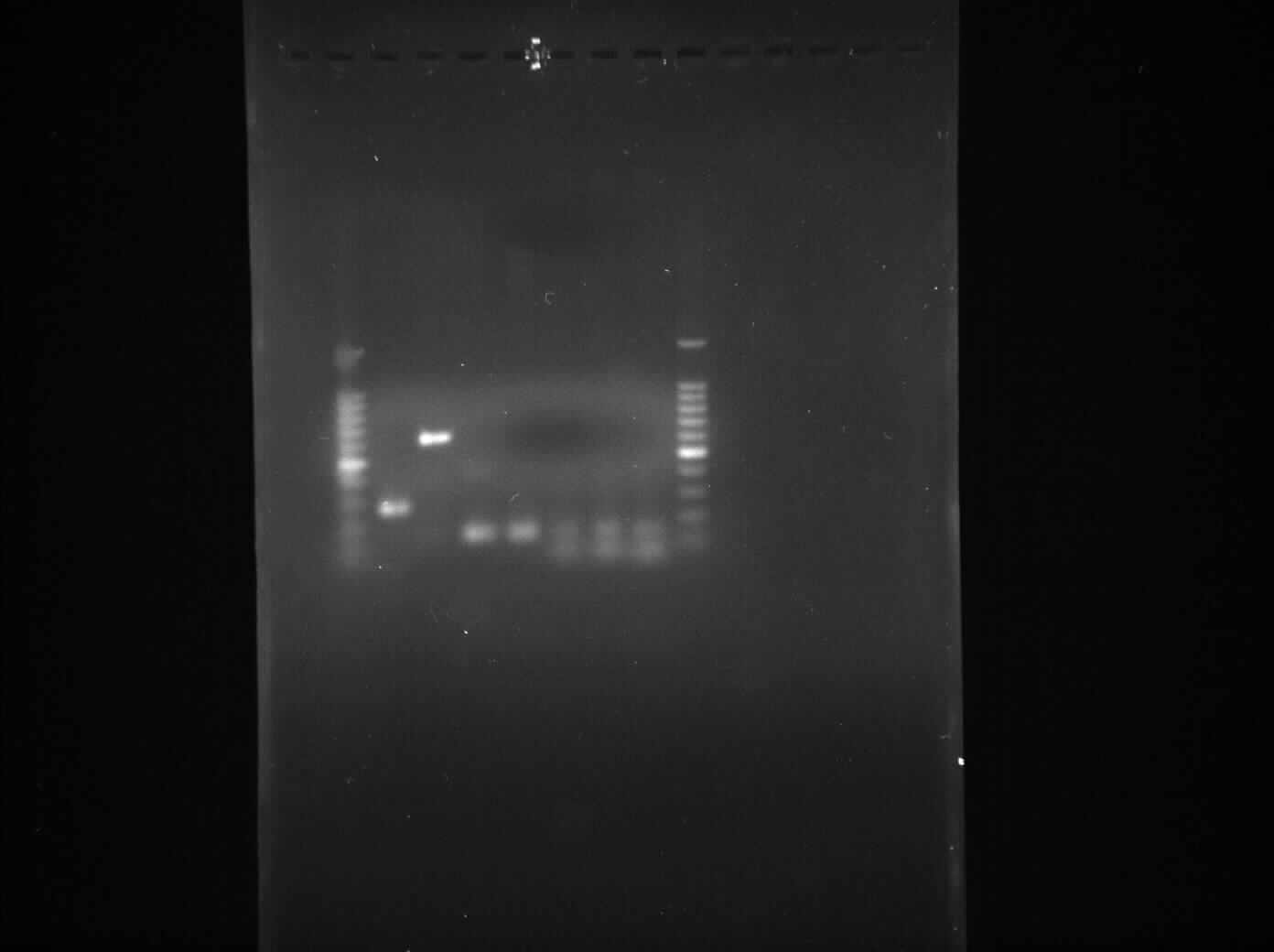Team:Newcastle/5 August 2010
From 2010.igem.org
Shethharsh08 (Talk | contribs) (→Conclusion) |
(→Concrete Tensile Splitting Test) |
||
| Line 58: | Line 58: | ||
=Concrete Tensile Splitting Test= | =Concrete Tensile Splitting Test= | ||
| + | |||
| + | ==Aim== | ||
| + | |||
| + | To get samples of cracked concrete for Bacilla Filla to fill up the cracks and to determine the tensile strength of concrete before and after the cracks are filled up. | ||
| + | |||
| + | ==Materials== | ||
| + | |||
| + | * Concrete cylinder | ||
| + | * Jubilee clips | ||
| + | |||
| + | ==Procedure== | ||
| + | |||
| + | # | ||
{{Team:Newcastle/footer}} | {{Team:Newcastle/footer}} | ||
Revision as of 16:00, 5 August 2010

| |||||||||||||
| |||||||||||||
Contents |
Gel Electrophoresis for the Amplified Fragments of rocF
Aim
The aim of the experiment is to perform gel electrophoresis for all the 6 PCR reactions which took place yesterday 4th August, 2010 and thus confirm that all 6 PCR reactions were successful.
Materials and Protocol
Please refer to: Gel electrophoresis.
Result
- Lane 1: 1kb DNA ladder
- Lane 2: BioBrick compatible vector pSB1C3
- Lane 3: Pspac_oid promoter
- Lane 4: 1st fragment of rocF CDS
- Lane 5: 2nd fragment of rocF CDS
- Lane 6: 3rd fragment of rocF CDS
- Lane 7: Double Terminator
- Lane 8: 1kb DNA ladder
| Biobrick compatible vector pSB1C3 | Pspac_oid pormoter | 1st fragment of rocF CDS | 2nd fragment of rocF CDS) | 3rd fragment of rocF CDS | Double Terminator | |
|---|---|---|---|---|---|---|
| Size of the Fragment (in bp) | 2072 approx. | 106 approx. | 246 approx. | 597 approx. | 125 approx. | 116 approx. |
Table 1: Table represents the size of the fragments represented as bands on the gel in their corresponding lanes.
Discussion
We found bands in the lanes 2,4,5,6 and 7 of the correct sizes but lane 3 did not contain any band.
Conclusion
This experiment shows that the PCR reaction was successful for all the fragments apart from Pspac_oid promoter which was present in the lane 3 and did not show any band. This could be because of the following problems:
- Primer sequences could be incorrect.
- Melting temperature could be incorrect.
- Plasmid pMutin4 could have degenerated due to long term storage.
Solution for the problem
- If P1 buffer of the Qiagen miniprep kit is contaminated, then use a different kit. We have Promega miniprep kit which will be used tomorrow.
- If RNAse enzyme is inactive, then add extra RNAse into the P1 buffer. We would be adding 10 µl in the P1 buffer solution.
Concrete Tensile Splitting Test
Aim
To get samples of cracked concrete for Bacilla Filla to fill up the cracks and to determine the tensile strength of concrete before and after the cracks are filled up.
Materials
- Concrete cylinder
- Jubilee clips
Procedure
 
|
 "
"
